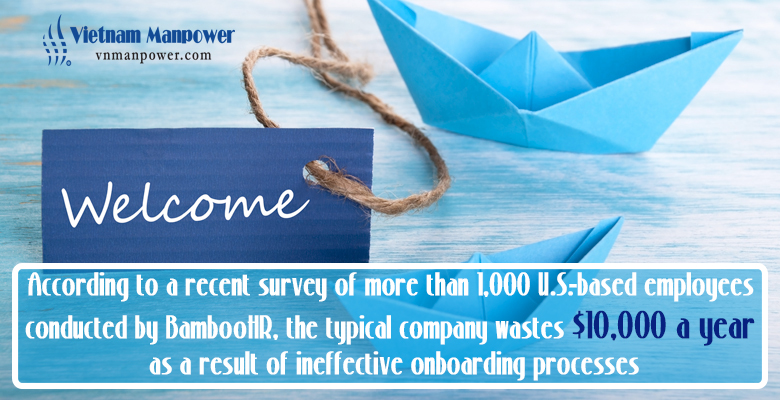Think about how your new hires feel when they come in your company to find the company unprepared for their arrival. Onboarding is very important to the employer-employee relationship. Still, proper onboarding isn’t only about first impressions. Taking time to plan how new comers will be introduced into your firm will affect their future work performance, their ability to achieve the stated goals and their satisfaction with their new posts.

To help you succeed in those respects, consider the below onboarding process that will help new comers integrate quickly into your firm.
For those who are interested in:
7 great ways to improve employee productivity
3 questions for low-productivity employees
On the first day
• Send the first day schedule
A simple way to ease your new recruit’s anxiety and set expectations is informing him of what to expect on the first day. Create a simple on-page email or post first day tasks with links to necessary related paperwork. If your enterprise hosts an About page with staff profiles, include this also.
Above and beyond: Send a goodie bag with the enterprise schwag or a card signed by the team members with whom the new-hire will be working.
• Create an onboarding plan
When the new-hire arrives for the first day, include a printed welcome packet with the necessary paperwork, an office map. Also, give a new-comer checklist to keep your new employee on track and give him a sense of accomplishment in the first few days.

Above and beyond: Make the onboarding packet and corresponding tasks more interesting to the new-hire by turning them into a game. Transform the boring office tour into a treasure hunt and have your new employee avail a set of clues to hunt down the office supplies, bathrooms or famous local lunch spots.
• Lead with ‘Why’
Before your new employee starts to work on tasks, he should understand the company value and how his work contributes to that value. Concentrating on those two points will boost the intrinsic motivation and helps him see his work as part of a bigger picture.
You may also like:
How to Give a Speech That Will Boost the Morale of Your Employees
Above and beyond: Print an inspirational poster or letter on a worker’s first day.

When employees arrive for their first day at Apple, they are given this inspiration note.
Overall, creating a memorable first day for new comers not just reduces anxiety but raises retention and improves recruitment efforts. Give your new hires something to brag about to their friends and you won’t have much trouble finding employees in the future.
During the first week
• Plan a manager’s meeting. Sometime during the first working week, set aside time for the new employee to meet with their immediate manager. Avail this meeting to give the manager time to know the new team member, share their managing style and explain the future expectation. Also, it can be helpful to use this time to let the new hire know what the ramp-up process will be like in the 1st month or two on the job.
• Cover important processes of work. As the new employee’s first week progresses, have the new-hire and manager meet some more times as needed to discuss important processes of work. For instance, new team members need know email protocol, communication expectations and in-house decision making processes. This is also a great time to set short- and long-term goals. If the new employee will take on the supervisory role, they should also meet with their direct reports to start to build rapport.

The first 30–90 days
• Invest in training. The productivity losses can be thwarting though, a new employee’s first 30-90 days on the job should be considered as an initial training period. Train your new hire on everything from ins and outs of your product line to positioning of your brand in the market. Once this introductory period is ensured, you will have a much stronger employee than the one you threw immediately to the wolves.
• Provide job shadowing. One of best ways to train new employees is to have them shadow other employees. Still, don’t just focus on those in the department of that employee. Cross training your employees by having them shadow workers in every department of your firm will give them a far better grip of how your organization works.

• Develop opportunities for feedback in the worker’s first couple of months on the job. Ensure new recruits know that they are free to share and encourage innovation and new ideas. They mayn’t be comfortable doing so on the first day though, over time, their feedback as well as insights should be encouraged.
• Conduct your first review. Finally, after 90 days of work, the new hire should be given the manager’s first evaluation. At this point, the new comer should be fully integrated into the enterprise and operating at full workload. Defining weaknesses at this stage will let you either prevent small problems from getting worse or terminate the new comer’s employment before too many resources have been invested in the employee that can’t work out.
Have another great onboarding process to share? Tell us in the comments!












Replies to This Discussion